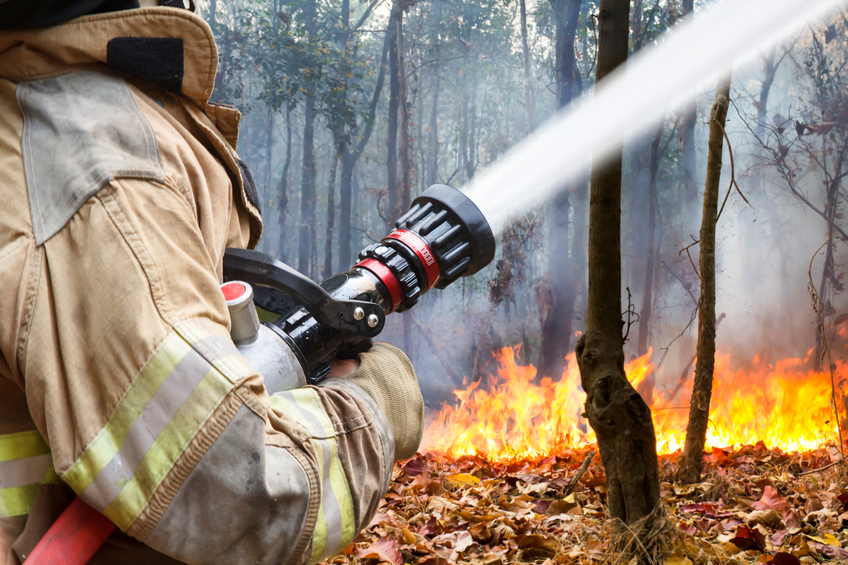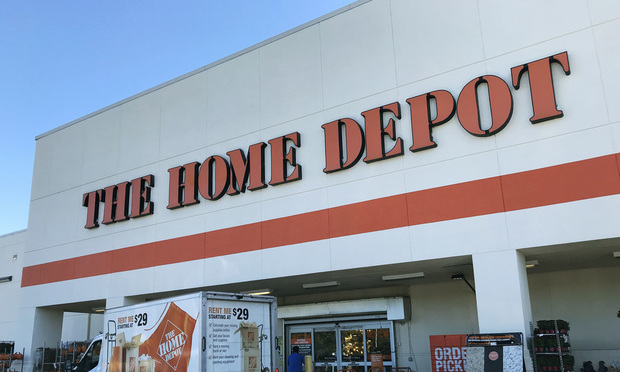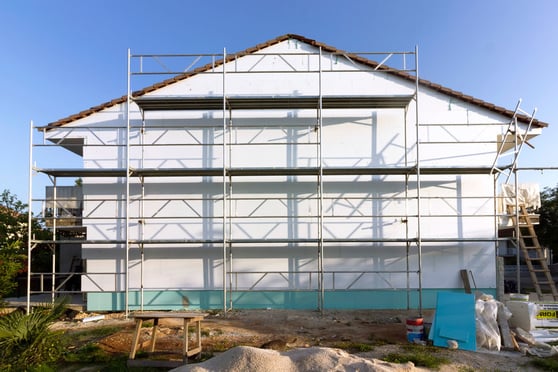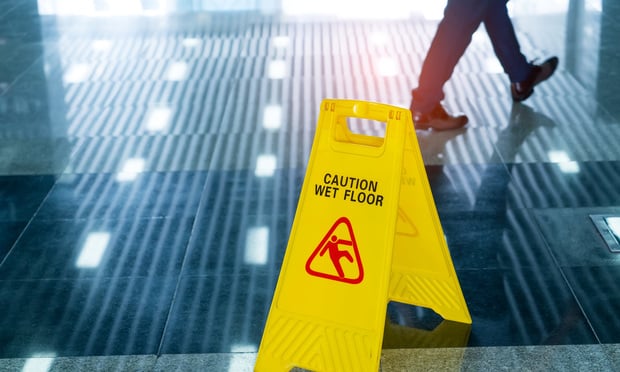
The cost of fighting a fire often is not covered under a traditional commercial insurance policy. (Photo: iStock)
Analysis brought to you by the experts at FC&S Online, the authority on insurance coverage interpretation and analysis for the P&C industry. To find out more — or to have YOUR coverage question answered — visit the National Underwriter website, or contact the editors via Twitter: @FCSbulletins.
Question: I have a total loss fire being handled under an all risk policy. A portion of the claim is for $3,755 worth of digital images that were stored in the computer.
We paid to replace the computer but would we owe anything for the stored photos? They are not recoverable as they were not backed up. How do you place a value on this if it is covered?
— Arizona Subscriber
Answer: There is no coverage for this type of property on the standard ISO commercial property form. There is an additional coverage for electronic data, but, provided these files could be categorized as electronic data, the provision stipulates that if the electronic data cannot be replaced or restored, the loss will be valued at the cost of the replacement of the media on which the media was stored. The replacement would be blank media of substantially identical type. Since you paid to replace the computer, which is the media on which the images were stored, there is not any other recovery available for this loss.
Related: The 8 insurance coverages that are triggered by a catastrophic fire
Abandoning a business after a fire
Question: Our insured had total loss fire and is insured under a businessowners policy. The insured is a dentist and determined that as of this, loss she would abandon this practice as she had other locations that were more productive.
Since there was a direct loss from a covered peril, but no period of restoration to speak of, will the insured recover any policy proceeds under business income coverage?
— Iowa Subscriber
Answer: In order for business income coverage to be triggered, the insured must suffer an actual loss of business income due to the necessary suspension of operations during the period of restoration. If the dentist is not continuing the business at that location, and it is not going to be repaired or replaced, you are correct that there is no period of restoration, and there is also no loss of income due to suspension of operations, so there would be no business income coverage.
Related: 5 tips for claims pros inventorying water-damaged sites
Coverage for farm-related losses
Question: Similar to the CGL form, the farm liability policy provides fire legal liability for damage by fire to a rented premises. We have a farmer who leases a field on which he grew a crop. During harvesting, the machinery he used caught fire and burned the crop. The policy would pay for fire damage to leased premises for which the insured was liable, but what about the crop? Is the crop part of the premises?
In another situation, our insured was baling hay at another person's farm. When he was finished, he had the last bale of hay sitting on a hillside. The bale rolled down the hill and struck the claimant's outbuilding. The siding was damaged and needs to be replaced. Under the farm liability policy, is this damage a covered loss or is one of the property damage exclusions applicable, such as the property damage to your work exclusion, or the faulty work exclusion?
— Iowa Subscriber
Answer: In answer to the first question, the word “premises” is not defined on the farm liability policy, so you have to check the regular dictionary. The dictionary defines premises as a building or part of a building or a tract of land with buildings on it. Based on that and a reasonable interpretation of the word “premises,” we are of the opinion that crops are not premises. They are a product of the premises since they were grown there, but that does not make them premises.
As for the second question, the building was damaged, but the insured was not working on the building. He was baling hay which had nothing to do with the building. The insured's work caused damage to another's property and that is what is meant to be covered by a liability policy. Neither of the exclusions you mentioned would be applicable in this instance. The damage to the building is covered under the insured's liability policy.
Related: 6 critical home fire escape planning tips
What about the cost of fighting a fire?
Question: Our insured accidentally started a forest fire that caused damage to a third party's forest/prairie. It was government land, and the government did not make a claim for any property damage. However, the question is: are we obligated to pay the fire fighting expenses on behalf of our insured because they were expenses as a result of property damage? Or, conversely, would this be considered a purely economic loss as there is no property damage? Should the CGL form respond to paying only expenses to put out a forest fire? Thanks.
— Wisconsin Subscriber
Answer: What the CGL form will pay is PD for which the insured is liable. But there has to be property damage as defined. As long as there is property damage as defined, the policy will pay all expenses that the insured is liable for and if that includes firefighting expenses, then that is going to be covered. But, if there is no PD as defined, consequential expenditures like firefighting are not going to be covered by the CGL form. So, the key is the occurrence of property damage as defined.
The CGL form applies to property damage claims. Property damage is a defined term on the CGL form and if the claim does not meet that definition, the CGL form will not respond. Property damage is physical injury to tangible property or loss of use of tangible property that is not physically injured. Firefighting expenses by themselves do not meet the PD definition, so the CGL form is not going to pay those expenses.
Replacing damaged landscaping
Question: Our insured has a home insured on an HO 00 03 10 00 for $405,000. He suffered a fire loss, and consequently there was much damage to his landscaping. He submitted a bill, but it is not broken out and simply states “$12,000 for trees, shrubs and mulch,” and $5,500 for lawn work. He has 5 percent of the dwelling limit, or $20,250 to apply to trees, lawns, and shrubs, but even so the bill seems excessive.
We have three questions. (1) Since lawns are listed as “trees, shrubs, plants or lawns,” would the $500 limitation for any one tree, shrub or plant apply? (2) Much of the damage to the lawn was caused by extensive water from the fire hoses and by vehicles pulling off the one-lane driveway. So, the fire did not damage the lawn. Is this a separate loss? The policy does not cover land; are the tracks made by the vehicles excluded? (3) Does the additional coverage for trees, shrubs and plants also apply if the dwelling should have to be demolished?
— Kentucky Subscriber
Answer: First, we think you are entitled to more of an itemization on the bill.
The policy limits the coverage to $500 for any one tree, shrub, or plant. Not included within this sublimit, however, are “lawns,” because to do so would be unrealistic. If the limitation applied, it would read $500 for any one tree, shrub, or lawn,” or something similar. The tracks made by the vehicles are covered because it was the lawn that was damaged, not the land itself. Webster's Collegiate Dictionary (Tenth Edition) defines a “lawn” as “ground (as around a house or in a garden or park) that is covered with grass and is kept mowed.” Therefore, the coverage applies to more than just the grass.
The efficient proximate cause of the loss was the fire. Just as water damage within a dwelling from fire-suppressant equipment is covered under “fire” and not “water,” the same principle applies here. Had it not been for the fire, the water and vehicles would not have caused this damage.
The same should be true if the building had to be demolished because of the fire. For example, if the demolition was required because of ordinance or law, the trigger for this would go back to the fire. Coverage for any trees, shrubs, or plants should follow this same logic.
Related: 6 simple ways to make your home safer
Burnt trees: Lost property or fresh saplings?
Question: We have an HO3 4-91 policy. The loss is a brush fire in the insured's yard. They had damage to trees, shrubs, and bushes. We have two questions. If a tree is burned and charred but not dead, is this a loss to the tree and do we owe to replace the tree? Secondly, this is a large lot with lots of small plants or bushes growing naturally and not “landscaped.” Are these bushes covered under this coverage?
— California Subscriber
Answer: You raise a good question. Apparently a tree that has been burned does not necessarily die; if the bark has just been charred then there is a good chance the tree will survive. In your situation you need a tree expert to look at the trees and determine which will live and which won't. While destructive, fire actually helps many forests regenerate and fosters new growth.
If the expert determines that the trees won't survive then we'd call that a loss and coverage should be provided for those trees and bushes. It doesn't matter whether or not the trees and bushes are professionally landscaped; the policy covers any trees and bushes, and trees and bushes that are part of the property are covered.
See also:
Safe at home plate: Rebuilding a fire-damaged baseball stadium
Want to continue reading?
Become a Free PropertyCasualty360 Digital Reader
Your access to unlimited PropertyCasualty360 content isn’t changing.
Once you are an ALM digital member, you’ll receive:
- Breaking insurance news and analysis, on-site and via our newsletters and custom alerts
- Weekly Insurance Speak podcast featuring exclusive interviews with industry leaders
- Educational webcasts, white papers, and ebooks from industry thought leaders
- Critical converage of the employee benefits and financial advisory markets on our other ALM sites, BenefitsPRO and ThinkAdvisor
Already have an account? Sign In Now
© 2025 ALM Global, LLC, All Rights Reserved. Request academic re-use from www.copyright.com. All other uses, submit a request to [email protected]. For more information visit Asset & Logo Licensing.








